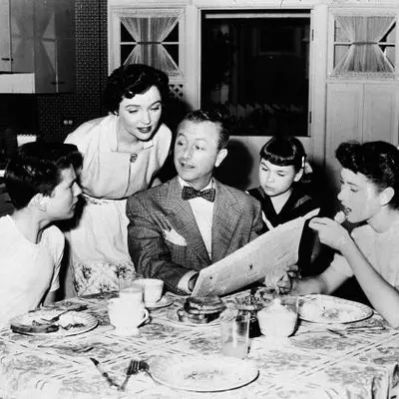What Is Benjamin Guggenheim’s Net Worth?
Benjamin Guggenheim, born on October 26, 1865, in Philadelphia, Pennsylvania, was a prominent figure in the Guggenheim family, known for their vast mining empire. By 1912, when he boarded the Titanic, his personal net worth was estimated at $4 million. Adjusting for inflation, this sum is equivalent to approximately $95 million in today’s dollars. Guggenheim inherited a substantial fortune from his father, Meyer Guggenheim, who passed away in 1905.
Guggenheim’s Early Life and Mining Career
Ben Guggenheim was the fifth of seven sons of Meyer Guggenheim and Barbara Myers. Meyer Guggenheim, a Swiss-born mining magnate, built a formidable business empire primarily centered around mining and smelting operations. Ben’s early career involved managing the family’s mining interests in Leadville, Colorado, starting at the age of 20. While in Leadville, he established a smelting operation in Pueblo, which significantly contributed to the Guggenheim family’s wealth. His contributions to the family business earned him the nickname “Silver Prince.” The Guggenheim family’s mining ventures included significant holdings in copper, silver, and gold mines across the United States and internationally, making them one of the wealthiest families of the Gilded Age. The Guggenheim Museum in New York City, showcasing one of the world’s finest art collections, was founded by Ben’s brother, Solomon R. Guggenheim. The family’s wealth facilitated their cultural contributions, highlighting their influence beyond the business world.
The Titanic Voyage and Guggenheim’s Final Act
In 1912, Benjamin Guggenheim, accompanied by his mistress Leontine Aubert, his valet Victor Guglio, and his chauffeur Rene Pernot, booked passage on the Titanic. Aubert’s maid, Emma Sagesser, also traveled with them. Guggenheim originally intended to travel on the Lusitania but switched to the Titanic after his initial voyage was canceled due to repairs. The Titanic, a brand-new ship from the White Star Line, was considered the pinnacle of luxury and safety at the time. On the night of April 14, 1912, the Titanic struck an iceberg at approximately 11:40 PM. Guggenheim and his valet were awakened by Aubert and Sagesser shortly after midnight, roughly 20 minutes after the collision. He ensured that Leontine Aubert and Emma Sagesser were safely placed into Lifeboat No. 9. Guggenheim’s actions following the iceberg collision have cemented his legacy as a man of honor. Knowing the gravity of the situation, Guggenheim and his valet returned to their stateroom and changed into their evening attire, believing they would not survive. They were last seen in the foyer of the Grand Staircase, seated in deck chairs, sipping brandy, and smoking cigars. Guggenheim’s reported last words were: “We’ve dressed in our best and are prepared to go down like gentlemen.” He also conveyed a message to his wife, stating that he had “played the game straight to the end” and that no woman would be left on board because of any cowardice on his part.
Details of Passengers Traveling with Guggenheim
When Benjamin Guggenheim boarded the Titanic, he was traveling with several companions: Leontine Aubert, his mistress; Victor Guglio, his valet; Rene Pernot, his chauffeur; and Emma Sagesser, Leontine Aubert’s maid. Leontine Aubert was a 25-year-old French singer. Victor Guglio was Guggenheim’s valet and a close confidant. Rene Pernot served as Guggenheim’s chauffeur. Emma Sagesser was the maid of Leontine Aubert. All four of these individuals were traveling with Guggenheim in first class on the Titanic. He made sure that Leontine Aubert and Emma Sagesser were placed in Lifeboat No. 9. Guglio and Guggenheim remained on the ship.
Accounts of Guggenheim’s Actions After the Collision
After ensuring the safety of Leontine Aubert and Emma Sagesser, Guggenheim and his valet, Victor Guglio, returned to their cabin. Eyewitness accounts suggest that they took time to change into their finest evening wear. There are differing stories that suggest the men changed into their finest evening wear for different reasons. The pair was later seen in the Grand Staircase foyer, drinking brandy and smoking cigars. Guggenheim’s reported statement, “We’ve dressed in our best and are prepared to go down like gentlemen,” highlights his intention to meet his fate with dignity. This act has become a symbol of honor and stoicism in the face of tragedy. There are reports that a photo of Guglio, who was of Italian-Egyptian heritage, surfaced years later, sparking theories that racism prevented him from being allowed on a lifeboat, and that Guggenheim chose to remain with his friend rather than leave him behind. Guggenheim’s actions have been interpreted in many ways, but his commitment to facing death with honor is a consistent theme.
Theories Behind Guggenheim’s Decision
Historians have long debated the reasons behind Benjamin Guggenheim’s decision to remain on the Titanic. Given his wealth and status, he likely had opportunities to secure a place on a lifeboat. One theory suggests that he felt a sense of responsibility to prioritize the lives of women and children, adhering to the “women and children first” protocol. Another theory posits that he may have believed the ship was not in as dire a situation as it was, initially thinking it was a temporary setback. There is also the possibility that he realized the limited number of lifeboats and chose to accept his fate rather than fight for a spot, displaying a sense of fatalism and acceptance. Furthermore, some historians have suggested that Guggenheim’s decision was influenced by his personal values and sense of honor. He may have felt it was ungentlemanly to compete for a spot on a lifeboat when others were in greater need. The theory involving Victor Guglio, who was of Italian-Egyptian heritage, suggests that racism may have played a role, with Guggenheim choosing to stay with his friend rather than leave him to die alone. These theories offer various perspectives on Guggenheim’s mindset during the Titanic’s final hours.
Guggenheim’s Family and Personal Life
Benjamin Guggenheim married Florette Seligman in 1894. The couple had three daughters together. By 1912, Benjamin and Florette had grown distant and were living separate lives. Guggenheim maintained an apartment in Paris, away from his family home in New York City. Guggenheim’s marriage to Florette Seligman produced three daughters. His time spent in Paris indicated a degree of separation from his family. After Guggenheim’s death, his estate was likely divided among his daughters and possibly his estranged wife. Further details about Guggenheim’s personal habits or routines are limited, but his actions on the Titanic suggest a man of strong convictions and a sense of duty. Despite his personal wealth and status, Guggenheim chose to prioritize the lives of others in his final moments. His actions have left a lasting legacy.
Leontine Aubert’s Life After the Titanic
Leontine Aubert, Benjamin Guggenheim’s mistress, survived the sinking of the Titanic. She lived to be 77 years old, passing away in 1964. Following the Titanic disaster, Aubert lived a relatively private life. There is little public information available about her activities or whereabouts. She maintained a connection to the tragic event throughout her life. Leontine Aubert’s survival meant that she carried the memory of Guggenheim’s final moments. Her life after the Titanic reflects the long-term impact of the disaster on those who survived.
Details About Benjamin Guggenheim’s Business Ventures
Benjamin Guggenheim’s primary source of wealth came from his involvement in the family’s mining business. The Guggenheim family’s mining empire spanned various minerals, including copper, silver, and gold. Guggenheim played a key role in managing and expanding these mining operations. His establishment of a smelting operation in Pueblo further contributed to the family’s financial success. Guggenheim’s business acumen and leadership helped solidify the family’s position as one of the wealthiest in the United States. His contributions to the family’s mining ventures directly influenced his personal net worth.
 Net Worth Ranker
Net Worth Ranker





























































